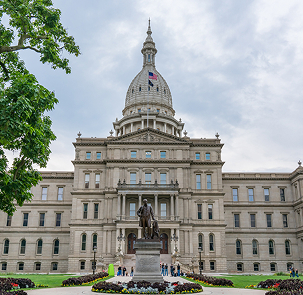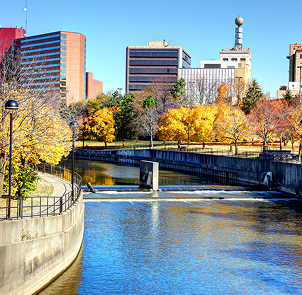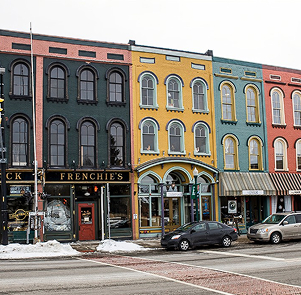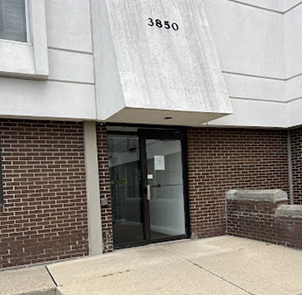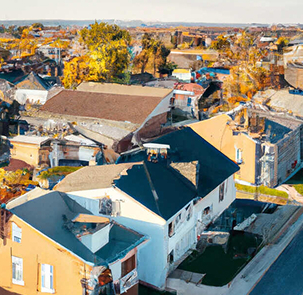- News
- Snowmobile Injuries and Deaths Are on the Rise: Tips to Steer Clear of Accidents on Michigan’s Snowy Trails
Snowmobile Injuries and Deaths Are on the Rise: Tips to Steer Clear of Accidents on Michigan’s Snowy Trails
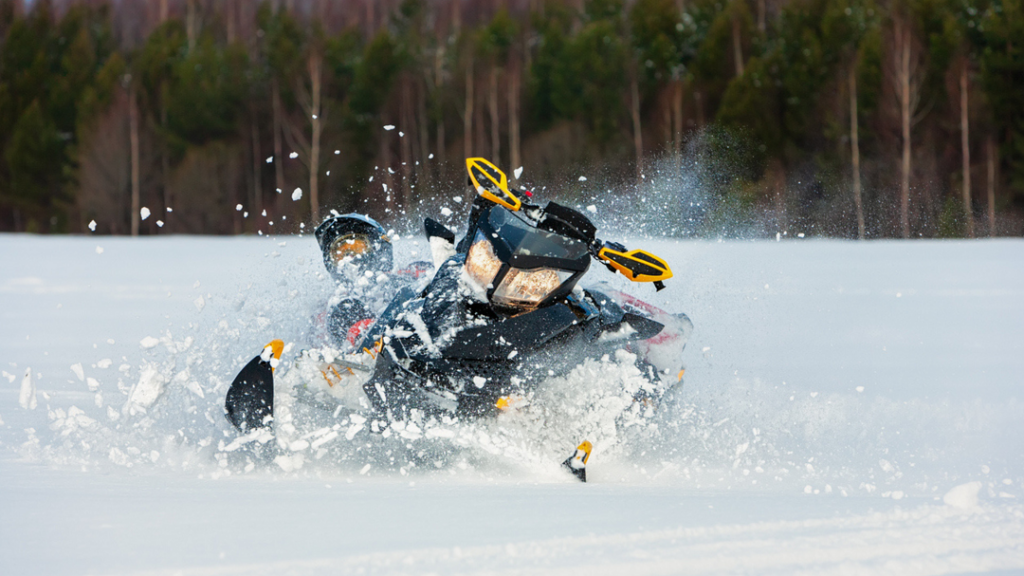
Sadly, since we last wrote about snowmobile safety a couple of winters ago, the number of serious accidents and even deaths related to these “jet-skis-on-ice” have spiked across Michigan. In recent months, for example, numerous injuries have been reported, along with tragic fatalities including a 15-year-old boy who fell through the ice on Indian Lake near Manistique, a 32-year-old Illinois man whose snowmobile slammed into a steel power structure in Grand Traverse County, and a 56-year old man from Wisconsin who crashed on a trail in Ontonagon County. Indeed, over the past few years dozens of riders have died in snowmobile-related accidents statewide – with, not surprisingly, most deaths occurring in the Upper Peninsula.
All of this snow-machine mayhem has spurred the Michigan Department of Natural Resources (DNR) to initiate a video campaign designed to encourage snowmobile safety by asking lead riders (those who travel at the front of a pack of snowmobiles) to operate their vehicles responsibly and safely. Among the valuable pieces of advice listed by the DNR are that:
- “Snowmobilers should watch out for, and yield to, trail groomers.
- On some routes, private property owners generously allow trails to navigate through their properties. (But due to rider misbehavior) more than 400 miles of trails have been lost due to noise or trespassing.
- Ride at a safe speed, ride sober, and ride on the right side of the trail; trails have two-way traffic.
- Always wear a helmet and keep lights on while riding.
- Only transport a passenger if the machine is manufactured to carry a passenger.
- Come to a complete stop at all intersections. Raise off the seat and look both ways for traffic before proceeding.
- Create a ride plan (times, route location, and check-in points) and share it with others. Stay on the trail and be prepared to adjust for changing environmental conditions.
- Use designated stop areas if you need to stop on the trail and remove your helmet. Never stop side-by-side, in the middle, at the crest of a hill, on a corner or in an intersection.
- Share the trail. Some designated snowmobile trails are also open to ORVs and other (non-motorized) users. Non-motorized trail users have the right-of-way. If you see non-motorized trail users coming from the opposite direction, pull over and yield.”
All those helpful ideas aside, you may have additional concerns about safety, licensing, and other legal matters related to snowmobiles. Let’s take a few minutes to answer some of the most frequently asked questions here:
Where Is it Safe to Drive a Snowmobile in Michigan?
Michigan has more than 6,000 miles of designated snowmobile trails, many of which are groomed when there’s adequate snow coverage. Since those trails are well marked and usually away from roads where cars and trucks present a clear and present danger to snowmobile operators, they’re probably the best places to ride. You can also check on specific trail conditions using this online tool, and this interactive map can help you find marked trails near your location. To take advantage of the state’s snowmobile trails, however, an official permit (which currently costs $52 annually per vehicle) is required; you’ll find details on getting yours here.
If you’d rather go the trail less traveled, you can ask permission from private property owners to ride on their land. But if you’re operating your snowmobile in unfamiliar territory, be sure to keep your eyes open for such hazards as boulders and tree stumps, which might be covered by drifts.
Finally, while doing so is permitted under state law, riding your snowmobile along the shoulders of roads intended for cars is probably not the best idea. It doesn’t take much imagination to picture what happens to a 400-pound snowmobile when it collides with a two-ton pickup. If you must ride alongside a public roadway, stay as far to the right as possible, travel in a single file line, and go with the direction of motor vehicle traffic.
What Should You Do Following a Snowmobile Accident?
As with any situation where people are injured, dial 911 right away so first responders can get to the scene as quickly as possible. In the cold, it’s important to try to prevent victims from experiencing hypothermia. Wrap them in blankets to keep them as warm as possible. Since much body heat is lost through the head and exposed skin, be sure everyone is wearing a hat and gloves (mittens are even better). If someone is bleeding, apply pressure to the wound to help stop the flow of blood. In short, do everything you learned in basic first aid until emergency personnel arrive. The CDC offers a number of specific winter-related health tips for staying safe in the snow as well.
Where Are the Most Snowmobile Accidents in Michigan?
It will probably come as no surprise that the highest number of snowmobile crashes take place where there’s the most snow – and that’s usually way up north, meaning the Upper Peninsula. Over the past couple of winters, the U.P.’s Alger and Chippewa Counties have seen the highest number of snowmobile fatalities, while overall the most reported snowmobile-related accidents have occurred in Alger County. But the Lower Peninsula isn’t immune to the problem. There have been crashes reported in Oakland, Genesee, St. Clair, and Livingston Counties in recent months – and even one as far south as Monroe County!
Does My No-Fault Car Insurance Protect Me on My Snowmobile?
The simple answer is no. Since your snowmobile isn’t legally considered a motor vehicle under state law, typical no-fault coverage doesn’t apply. In fact, Michigan doesn’t even require snowmobile owners to buy insurance coverage at all, though it’s probably a good idea to protect yourself at least by purchasing a liability policy. Online comparison site ValuePenguin has some recommendations, or you can check with your family’s insurance agent for more information.
One recent decision by the Michigan Supreme Court does have an impact on how state-owned snowmobiles are viewed under the law, however. The court ruled that snowmobiles operated by DNR officers don’t fall under governmental immunity laws and can be treated as motor vehicles. This decision came after two snowmobilers were injured in an accident where the officers were traveling the wrong direction on their snowmobiles, forcing the other drivers from the road where they crashed.
What Are Michigan’s Snowmobile Rules and Regulations?
While you aren’t required to insure your snowmobile, you must register it with the state (unless you use it exclusively on private land). Registrations are good for three years, and expire at the end of September in the third year. And if you’re under age 17 you are also required to pass a snowmobile safety certification class. Regardless of your age, you’ll need to follow Michigan laws regarding snowmobile operation and obey some basic rules spelled out in the state’s official snowmobile regulation handbook. Among them …
“A Person Shall Not Operate a Snowmobile:
- While under the influence of drugs or alcohol.
- At a rate of speed greater than is reasonable for existing conditions.
- On the frozen surface of public waters within 100 feet of a person, including a skater, not in or upon a snowmobile.
- Within 100 feet of a dwelling between the hours of midnight and 6 a.m. at a speed greater than the minimum required to maintain forward movement of the snowmobile.
- While transporting a bow unless it is unstrung or encased, or a firearm unless it is unloaded and securely encased.
- To chase, pursue, worry or kill any wild bird or animal.”
Can I Sue After a Snowmobile Accident That’s Not My Fault?
Follow the rules when you’re operating a snowmobile, dress for the weather, and you’ll most likely find it’s an enjoyable and safe way to have some wintertime fun. But if you’re ever injured when you’re on your snowmobile due to someone else’s negligence, we encourage you to contact us to discuss the circumstances of the crash and to describe the type and extent of your injuries, which can often include severe spinal and skull trauma. It’s certainly possible that you’ll be able to receive legal compensation if someone else was found to be at fault, and we’ll do our best to help you achieve your desired outcome. Finally, if a catastrophe occurs, and a loved one is killed in a snowmobile-related accident, you might also find that a wrongful death lawsuit is warranted. Again, the first step to determine how to proceed in any of these situations is to call us immediately. Keep this number handy: 855-MIKE-WINS (855-645-3946) or contact us online right away to discuss your circumstances and to ask us to help you assess your legal rights.

Content checked by Mike Morse, personal injury attorney with Mike Morse Injury Law Firm. Mike Morse is the founder of Mike Morse Law Firm, the largest personal injury law firm in Michigan. Since being founded in 1995, Mike Morse Law Firm has grown to over 200 employees, served 40,000 clients, and collected more than $1.5 billion for victims of auto, truck and motorcycle accidents. The main office is in Southfield, MI but you can also find us in Detroit, Sterling Heights and many other locations.

